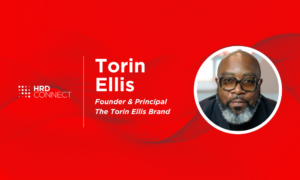Dave Ulrich: How can business and HR leaders simplify complexity?
- 5 Min Read
HR thought leader Dave Ulrich outlines ways leaders can deal with complexity in an increasingly busy world, including how to think critically and turn aspiration into action.
- Author: Dave Ulrich
- Date published: Jan 25, 2022
- Categories

The world today feels more complicated than ever. In the last two years alone, complex world events have reshaped our way of thinking, working and being, including:
- Global pandemic (COVID-19, quarantine, variants, vaccinations)
- Digital revolution (metaverse, AI, internet of things, zoom calls)
- Social injustice (racial, gender, financial, and social inequalities, refuges/immigration, woke)
- Political toxicity (polarization/partisanship, disrespect, cynicism, nationalism)
- Emotional malaise (stress, anxiety, depression, loneliness, well-being)
- Economic turbulence (inflation, job redefinition, scarcity, social citizenship)
But dealing with complexity, even before the pandemic, is not a new issue. Business leaders have long dealt with complexities both in and out of the workplace by satisficing, bundling, delineating, creating value, and renewing.
The difference now is that, with the unparalleled demands of the past two years, the ability to simplify complexity is now more critical than ever.
Think critically and separate the signal from the noise
From our HR Competence and Capability Study (HRC2S), we hypothesised that separating signal from noise would be a key competence for leaders. Based on previous research, we identified a number of behaviours related to this competence. Using data from over 28,000 respondents who rated 3,500 HR professionals, we analysed these behaviours, and they formed a common competence domain we labeled ‘Simplifies Complexity’.
Simplifies Complexity refers to the ability to sift through the voluminous amounts of information and change and to focus on issues of greatest importance. Part of this competency focuses on thinking critically rather than simply responding to the newest shiny object or rushing after the latest HR fad. Thinking critically also includes these behaviours:
- Sifts volumes of information to identify the most critical issues versus those less important.
- Effectively anticipates issues that will become critical before they are so.
- Avoids HR fads or trend practices.
- Thinks independently rather than follows external checklists / best practices.
- Frames complex ideas in simple and useful ways.
In addition, the ability to simplify complexity ties directly to the events of 2020–2021, and describes how, under times of either great change or crises, an individual can harness uncertainty and drive positive change in the organisation, including:
- Staying calm during organisation crises.
- Sensing when to act during times of uncertainty.
- Offering useful solutions and strategies during a crisis.
Our research shows that the ability to simplify complexity (think critically and harness uncertainty) was a key predictor of personal effectiveness and stakeholder value.
In other posts, I have laid out how to harness uncertainty in some detail, so let me suggest steps to being able to think critically.
Turn broad aspirations in specific actions
To think critically to simplify complexity, broad aspirations should be turned into specific actions. Too often, an aspiration leads to quick-fix actions that are more opinions rather than critical thinking.
Thinking critically weaves together theory (why), research (what), and solutions (how). A theory explains why and where a solution will work so that it can be replicated; research validates what can and should be done to have the most impact. Solutions without theory and research are opinions, which are often interesting but not sustainable, reliable, or replicable.

In a more rigorous process, aspirations and actions are connected through the logic of a diamond. The diamond often starts with an aspiration or question one wants to address, then leads to the wide angle with complexities of context, information, divergent thinking, and options.
Identifying these different complexities (wide angle of the diamond) is important, but we can also easily get caught up in and enamoured with those complexities in a way that stifles simple actions.

The greatest challenge of this logic is moving from our large middle body to the bottom half of the diamond: to turn complexity into simplicity with simple actions.
Oliver Wendell Holmes Jr. is famously quoted as having said, “I would not give a fig for the simplicity this side of complexity, but I would give my life for the simplicity on the other side of complexity.” Greg McKeon, a thoughtful colleague, calls for essentialism (the bottom part of the diamond) as the “disciplined pursuit of less.”
Below are four doable steps for making the complex simple.
- Relax
We easily feel overwhelmed with the complexities of life. To relax means to remain calm and in control by pausing (at least briefly) to patiently consider options by:
-
- Clarifying your personal priorities, what you want, and how you define success.
- Being mindful by regulating your body, thoughts, and emotions (see great work by Chris and Anne Altizer).
- Facing your fears and being at peace with the worst that can happen as well as accept that the best may not be what you initially intended.
- Organise
Isolated events can often be bundled into patterns that can be more observed and managed by:
-
- Looking for common underlying themes in the events that form blueprints and define the key elements to attend to.
- Identifying previous experiences with these themes and elements and recognising your predispositions.
- Exploring creative options by observing and engaging others, continuously improving, and unconventionally questioning and thinking.
- Adapt
Adaptive action means doing something, generally small and simple steps, then adapting quickly to make progress by:
-
- Prioritising where to start by sequencing (what causes what; do first things first), anticipating (what is likely to happen), and identifying guidance (what has the most impact).
- Enacting small actions that can be done quickly and that may make quick initial progress.
- Staying engaged in the process by seeing inevitable obstacles as opportunities to learn and reimagine; failing forward.
- Recognising that progress does not require perfection.
- Reflect
Reflect means renew and reinvent by:
-
- Evaluating actions to determine what worked and what did not and why.
- Discerning when to stop and move on.
- Taking care of oneself through personal renewal.
These four steps are not easy to do and require the “discipline of simplicity” to think critically and act simply. They require confidence in the ability to reimagine, transparency to engage with others, and humility to acknowledge weakness. They help identify key signals from noisy context in which we live.









